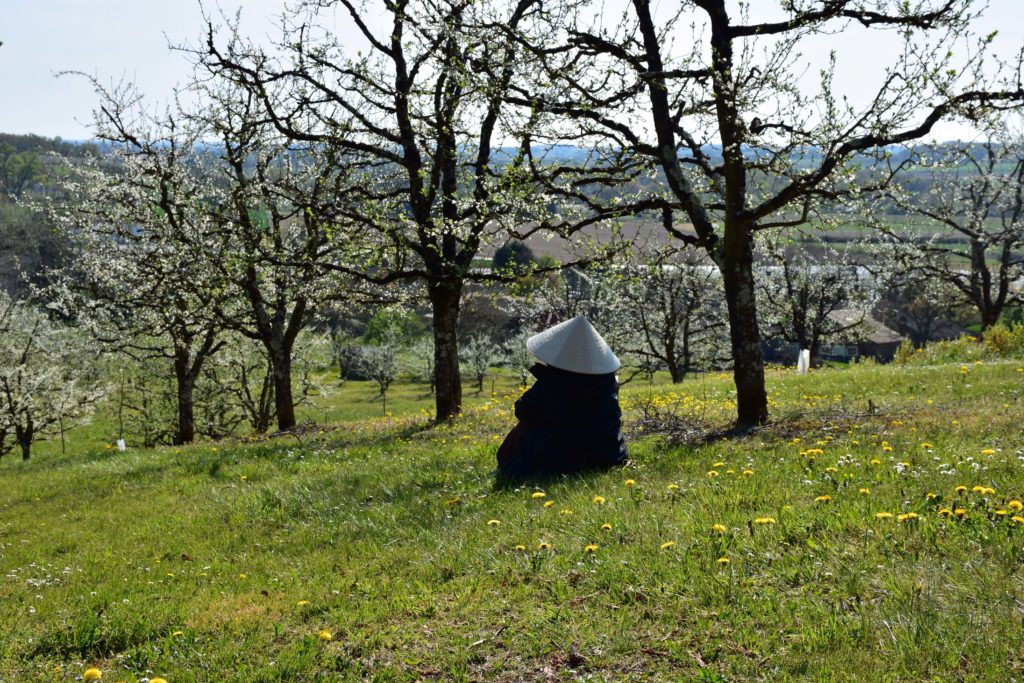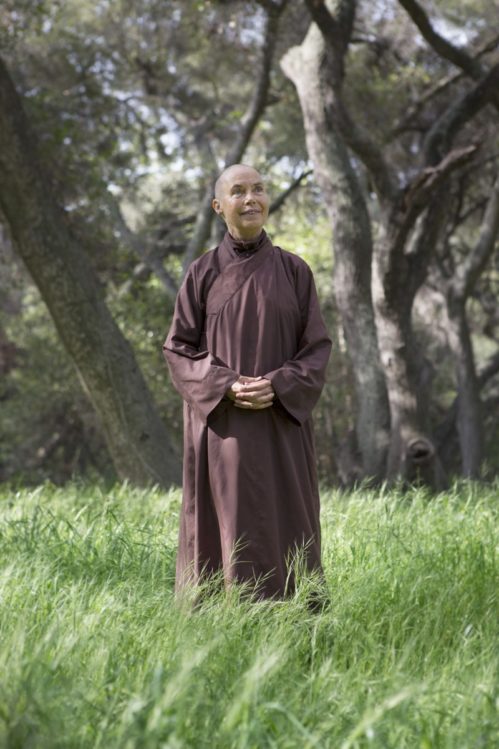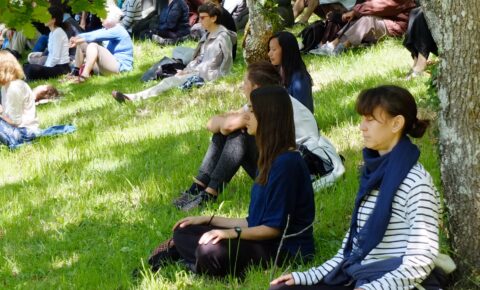
We have a period of silence on our schedule that starts after the last evening activity until after breakfast the next day and sometimes we like to extend it until after lunch. I have kept the schedules of our retreats over the years and it was in 1993 we started to call the practice of Silence “Noble Silence.”
Noble Silence does not mean that we are not allowed to talk. It means that we don’t have to talk, we have no obligation to talk during that period of the day or night.
Silence becomes Noble when it is an Inner Silence. The mind is calm and at ease. Whenever I hear the sound of a bell, whether it is the outside bell or the telephone or the chiming of the clock, I take it as an opportunity to practice Noble Silence. I go back to my breathing. I feel the air moving in and out of my body.
I become aware of the temperature of the air and the substance of the air as it moves in and out through my nostrils. With the practice of stopping and listening to the sound of the bell I go a little bit in the direction of Inner Silence.
I have noticed that when my mind is busy my body is also busy and I tend to do things noisily. I like to regard my body as a door leading to Inner Silence. Therefore I practice being aware of the sounds I make when I move around. This has a wonderful effect: my bodily actions become very quiet and my mind becomes calm.
When practicing sitting meditation I find the practice of body awareness very centering and stabilising. Sometimes we don’t really sit when we sit on our cushion or chair. We are almost off the cushion. When I sit on my cushion I become aware of the contact with the cushion and of any tension I may have in my body. It may be behind my forehead, in my shoulders or my abdomen. Breathing in I become aware of my body and breathing out I let go of this tension in my body. Then slowly, slowly every out-breath, I land on my cushion a little bit more until I sit firmly and stably as a mountain.
The practice of being aware of my whole body, from the top of my head to the very tip of my toes, and keeping this awareness alive throughout the whole period of sitting, brings about a feeling of joy and happiness in my body and mind which is very nourishing.
When we practice slow walking in the meditation hall I become aware of my body moving through space. Every time I take a step I become aware of the contact between my foot and the floor. I like to put my full weight on my foot as I take a step and come to rest in every step. When I put my foot down there is a little pause as I rest in my step. There is a physical feeling of sinking into the step. I like to practice this also outside, but not so slowly. At times resting in each step can be very challenging.
For instance, when the activity bell has already been invited, we feel we have to hurry. When we walk in a hurried way, we don’t rest in every step. Instead, we seem to quickly touch the earth in order to get somewhere. In times like that I practice taking the hurry out of my steps so that I can come to rest in every step. It can be challenging because there is something in me that tells me if I don’t hurry I will be late. However, if I don’t hurry I will get there much faster because hurry comes from worry and a worry is very heavy and slows me down. If we drop the hurry and the worry we move in a lighter way and we can be in every step and be on time. We can move faster but we don’t need to hurry.
When our bodily actions are calm and peaceful, our mind is also calm and peaceful and our Outer Silence becomes Inner Silence. Inner Silence is the foundation of Deep Listening. It is the essence of Dwelling in the Present Moment and being able to touch what is happening inside of us and around us. Inner Silence makes us available for ourselves, our loved ones and the Wonders of Life.

Sister Chân Diệu Nghiêm was ordained as a novice nun at the Hokyoji Temple, Fukui, Japan in 1985. She joined the Plum Village community in 1990 as one of Thầy’s first European monastic disciples. Sr. Diệu Nghiêm received full bhikshuni ordination from Thầy in 1992. She was the abbess of Lower Hamlet from 1998 until 2014 and now enjoys more time to teach.
Each year, Sr. Diệu Nghiêm leads mindfulness retreats around the world, including her ancestral lands of the Netherlands and Ireland. Her gentle and illuminating teachings have nourished generations of practitioners.






Share Your Reflections